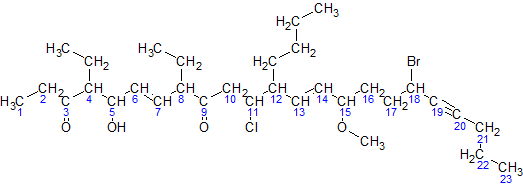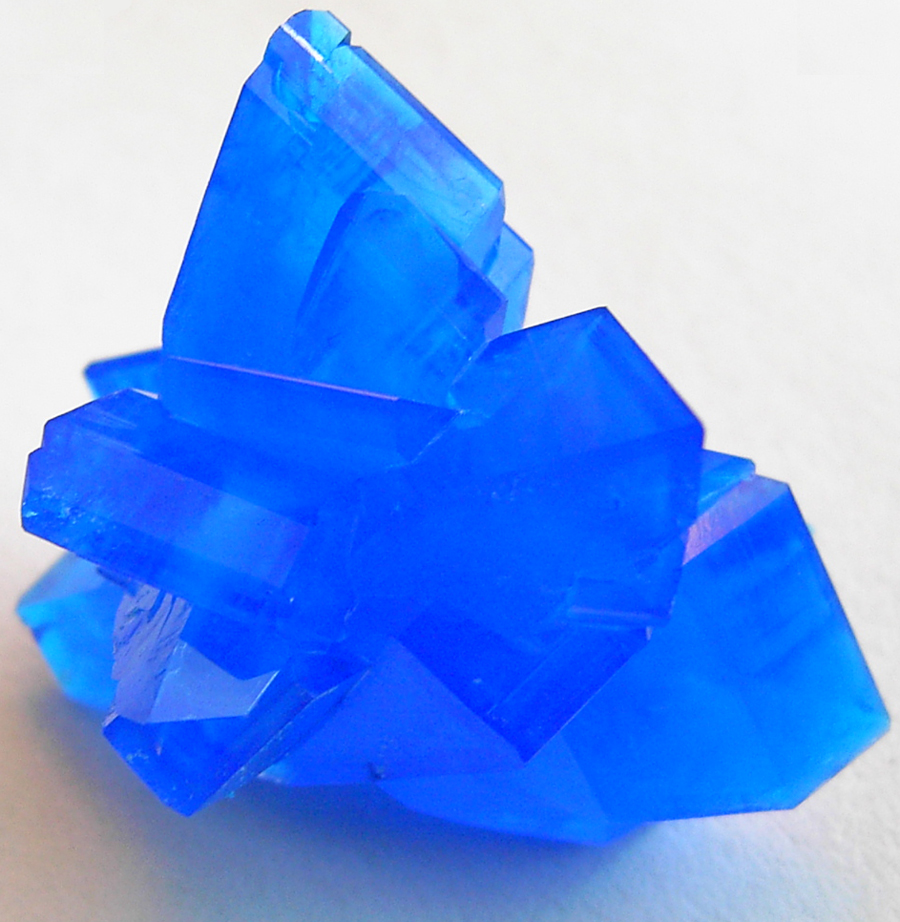|
Syn Addition
In organic chemistry, syn- and anti-addition are different ways in which substituent molecules can be added to an alkene or alkyne. The concepts of syn and anti addition are used to characterize the different reactions of organic chemistry by reflecting the stereochemistry of the products in a reaction. The type of addition that occurs depends on multiple different factors of a reaction, and is defined by the final orientation of the substituents on the parent molecule. Syn and anti addition are related to the Markovnikov's rule for the orientation of a reaction, which refers to the bonding preference of different substituents for different carbons on an alkene or alkyne. In order for a reaction to follow Markovnikov's rule, the intermediate carbocation of the mechanism of a reaction must be on the more substituted carbon, allowing the substituent to bond to the more stable carbocation and the more substituted carbon. Syn addition is the addition of two substituents to the same ... [...More Info...] [...Related Items...] OR: [Wikipedia] [Google] [Baidu] |
Organic Chemistry
Organic chemistry is a subdiscipline within chemistry involving the scientific study of the structure, properties, and reactions of organic compounds and organic materials, i.e., matter in its various forms that contain carbon atoms.Clayden, J.; Greeves, N. and Warren, S. (2012) ''Organic Chemistry''. Oxford University Press. pp. 1–15. . Study of structure determines their structural formula. Study of properties includes physical and chemical properties, and evaluation of chemical reactivity to understand their behavior. The study of organic reactions includes the chemical synthesis of natural products, drugs, and polymers, and study of individual organic molecules in the laboratory and via theoretical ( in silico) study. The range of chemicals studied in organic chemistry includes hydrocarbons (compounds containing only carbon and hydrogen) as well as compounds based on carbon, but also containing other elements, especially oxygen, nitrogen, sulfur, phosphorus (included in ... [...More Info...] [...Related Items...] OR: [Wikipedia] [Google] [Baidu] |
Ethene
Ethylene (IUPAC name: ethene) is a hydrocarbon which has the formula or . It is a colourless, flammable gas with a faint "sweet and musky" odour when pure. It is the simplest alkene (a hydrocarbon with carbon-carbon double bonds). Ethylene is widely used in the chemical industry, and its worldwide production (over 150 million tonnes in 2016) exceeds that of any other organic compound. Much of this production goes toward polyethylene, a widely used plastic containing polymer chains of ethylene units in various chain lengths. Ethylene is also an important natural plant hormone and is used in agriculture to force the ripening of fruits. The hydrate of ethylene is ethanol. Structure and properties This hydrocarbon has four hydrogen atoms bound to a pair of carbon atoms that are connected by a double bond. All six atoms that comprise ethylene are coplanar. The H-C-H angle is 117.4°, close to the 120° for ideal sp² hybridized carbon. The molecule is also relatively weak: rotati ... [...More Info...] [...Related Items...] OR: [Wikipedia] [Google] [Baidu] |
Hydroboration Oxdation Of Alkene
In organic chemistry, hydroboration refers to the addition of a hydrogen-boron bond to certain double and triple bonds involving carbon (, , , and ). This chemical reaction is useful in the organic synthesis of organic compounds. Hydroboration produces organoborane compounds that react with a variety of reagents to produce useful compounds, such as alcohols, amines, or alkyl halides. The most widely known reaction of the organoboranes is oxidation to produce alcohols typically by hydrogen peroxide. This type of reaction has promoted research on hydroboration because of its mild condition and a wide scope of tolerated alkenes. Another research subtheme is metal-catalysed hydroboration. The development of this technology and the underlying concepts were recognized by the Nobel Prize in Chemistry to Herbert C. Brown. He shared the prize with Georg Wittig in 1979 for his pioneering research on organoboranes as important synthetic intermediates. Addition of a H-B bond to C-C double ... [...More Info...] [...Related Items...] OR: [Wikipedia] [Google] [Baidu] |
Oxymercuration
The oxymercuration reaction is an electrophilic addition organic reaction that transforms an alkene into a neutral alcohol. In oxymercuration, the alkene reacts with mercuric acetate (AcO–Hg–OAc) in aqueous solution to yield the addition of an acetoxymercury (HgOAc) group and a hydroxy (OH) group across the double bond. Carbocations are not formed in this process and thus rearrangements are not observed. The reaction follows Markovnikov's rule (the hydroxy group will always be added to the more substituted carbon) and it is an anti addition (the two groups will be trans to each other). Oxymercuration followed by reductive demercuration is called an oxymercuration–reduction reaction or oxymercuration–demercuration reaction. This reaction, which is almost always done in practice instead of oxymercuration, is treated at the conclusion of the article. Mechanism Oxymercuration can be fully described in three steps (the whole process is sometimes called ''deoxymercuration''), w ... [...More Info...] [...Related Items...] OR: [Wikipedia] [Google] [Baidu] |
Oxymercuration-demercuration
The oxymercuration reaction is an electrophilic addition organic reaction that transforms an alkene into a neutral alcohol. In oxymercuration, the alkene reacts with mercuric acetate (AcO–Hg–OAc) in aqueous solution to yield the addition of an acetoxymercury (HgOAc) group and a hydroxy (OH) group across the double bond. Carbocations are not formed in this process and thus rearrangements are not observed. The reaction follows Markovnikov's rule (the hydroxy group will always be added to the more substituted carbon) and it is an anti addition (the two groups will be trans to each other). Oxymercuration followed by reductive demercuration is called an oxymercuration–reduction reaction or oxymercuration–demercuration reaction. This reaction, which is almost always done in practice instead of oxymercuration, is treated at the conclusion of the article. Mechanism Oxymercuration can be fully described in three steps (the whole process is sometimes called ''deoxymercuration''), w ... [...More Info...] [...Related Items...] OR: [Wikipedia] [Google] [Baidu] |
But-2-ene-hydration-2D-skeletal
In chemical nomenclature, the IUPAC nomenclature of organic chemistry is a method of naming organic chemical compounds as recommended by the International Union of Pure and Applied Chemistry (IUPAC). It is published in the ''Nomenclature of Organic Chemistry'' (informally called the Blue Book). Ideally, every possible organic compound should have a name from which an unambiguous structural formula can be created. There is also an IUPAC nomenclature of inorganic chemistry. To avoid long and tedious names in normal communication, the official IUPAC naming recommendations are not always followed in practice, except when it is necessary to give an unambiguous and absolute definition to a compound. IUPAC names can sometimes be simpler than older names, as with ethanol, instead of ethyl alcohol. For relatively simple molecules they can be more easily understood than non-systematic names, which must be learnt or looked over. However, the common or trivial name is often substantially sh ... [...More Info...] [...Related Items...] OR: [Wikipedia] [Google] [Baidu] |
Hydration Reaction
In chemistry, a hydration reaction is a chemical reaction A chemical reaction is a process that leads to the IUPAC nomenclature for organic transformations, chemical transformation of one set of chemical substances to another. Classically, chemical reactions encompass changes that only involve the pos ... in which a substance combines with water. In organic chemistry, water is added to an unsaturated substrate, which is usually an alkene or an alkyne. This type of reaction is employed industrially to produce ethanol, isopropanol, and butan-2-ol.. Organic chemistry Epoxides to glycol Several million tons of ethylene glycol are produced annually by the hydration of oxirane, a cyclic compound also known as ethylene oxide: : C2H4O + H2O → HO–CH2CH2–OH Acid catalysts are typically used. Alkenes For the hydration of alkenes, the general chemical equation of the reaction is the following: :RRC=CH2 + H2O → RRC(OH)-CH3 A hydroxyl group (OH−) attaches to one carbon of ... [...More Info...] [...Related Items...] OR: [Wikipedia] [Google] [Baidu] |
Adice Halogenovodíku
Adice ( sr, Адице) is an urban neighborhood belonging to the city of Novi Sad, Serbia. Borders The southern border of Adice is Podunavska ulica (Podunavska Street), the eastern border is Šumska ulica (Šumska Street), the northern border is Novosadski put (Novi Sad Road), and the western border is a western city limit of Novi Sad. Neighbouring city quarters The neighbouring city quarters and settlements are: Telep in the east, Veternička Rampa in the north, Veternik in the west, and Kamenjar in the south. Population Population of the Adice neighborhood is ethnically diverse and includes Serbs, a sizable Romani community, as well as members of other ethnic groups. Features There is a hotel named "Adice" in the main street of the settlement. A festival, called "Danube nights of Adice" is held annually in September. See also * Neighborhoods of Novi Sad This is a list of the neighbourhoods and suburbs of Novi Sad. Neighbourhoods on the left bank of the Danube ... [...More Info...] [...Related Items...] OR: [Wikipedia] [Google] [Baidu] |
Hydrohalogenation
A hydrohalogenation reaction is the electrophilic addition of hydrohalic acids like hydrogen chloride or hydrogen bromide to alkenes to yield the corresponding haloalkanes. : If the two carbon atoms at the double bond are linked to a different number of hydrogen atoms, the halogen is found preferentially at the carbon with fewer hydrogen substituents, an observation known as Markovnikov's rule. This is due to the abstraction of a hydrogen atom by the alkene from the acid (HX) to form the most stable carbocation (relative stability: 3°>2°>1°>methyl), as well as generating a halogen anion. A simple example of a hydrochlorination is that of indene with hydrogen chloride gas (no solvent): : Alkynes also undergo hydrohalogenation reactions. Depending on the exact substrate, alkyne hydrohalogenation can proceed though a concerted protonation/nucleophilic attack (AdE3) or stepwise by first protonating the alkyne to form a vinyl cation, followed by attack of HX/X− to give the produc ... [...More Info...] [...Related Items...] OR: [Wikipedia] [Google] [Baidu] |
Ei Mechanism
In organic chemistry, the Ei mechanism (Elimination Internal/Intramolecular), also known as a thermal syn elimination or a pericyclic syn elimination, is a special type of elimination reaction in which two Vicinal (chemistry), vicinal (adjacent) substituents on an alkane framework leave simultaneously via a cyclic transition state to form an alkene in a syn elimination, ''syn'' elimination. This type of elimination is unique because it is thermally activated and does not require additional reagents, unlike regular eliminations, which require an acid or Base (chemistry), base, or would in many cases involve charged Reaction intermediate, intermediates. This reaction mechanism is often found in pyrolysis. General features Compounds that undergo elimination through cyclic transition states upon heating, with no other reagents present, are given the designation as Ei reactions. Depending on the compound, elimination takes place through a four, five, or six-membered transition state.Ca ... [...More Info...] [...Related Items...] OR: [Wikipedia] [Google] [Baidu] |
Cycloalkane
In organic chemistry, the cycloalkanes (also called naphthenes, but distinct from naphthalene) are the monocyclic saturated hydrocarbons. In other words, a cycloalkane consists only of hydrogen and carbon atoms arranged in a structure containing a single ring (possibly with side chains), and all of the carbon-carbon bonds are single. The larger cycloalkanes, with more than 20 carbon atoms are typically called ''cycloparaffins''. All cycloalkanes are isomers of alkenes. The cycloalkanes without side chains are classified as small (cyclopropane and cyclobutane), common (cyclopentane, cyclohexane, and cycloheptane), medium (cyclooctane through cyclotridecane), and large (all the rest). Besides this standard definition by the International Union of Pure and Applied Chemistry (IUPAC), in some authors' usage the term ''cycloalkane'' includes also those saturated hydrocarbons that are polycyclic. In any case, the general form of the chemical formula for cycloalkanes is C''n''H2(' ... [...More Info...] [...Related Items...] OR: [Wikipedia] [Google] [Baidu] |




